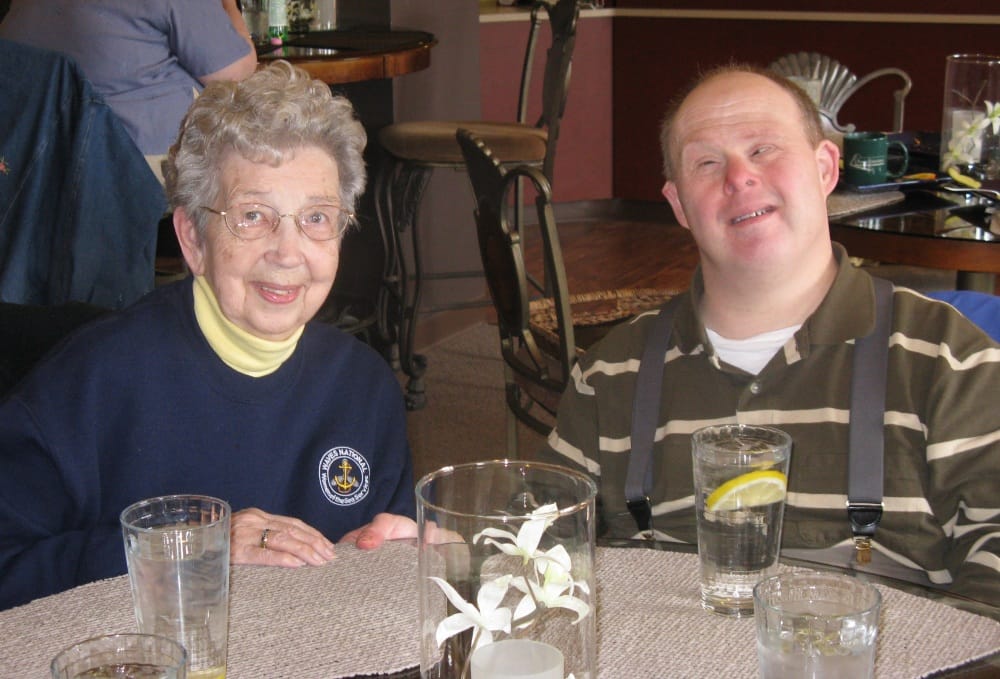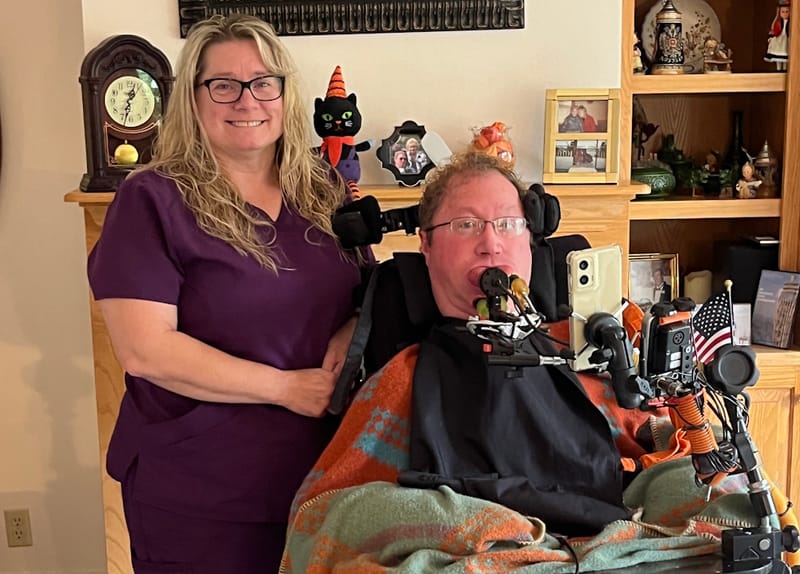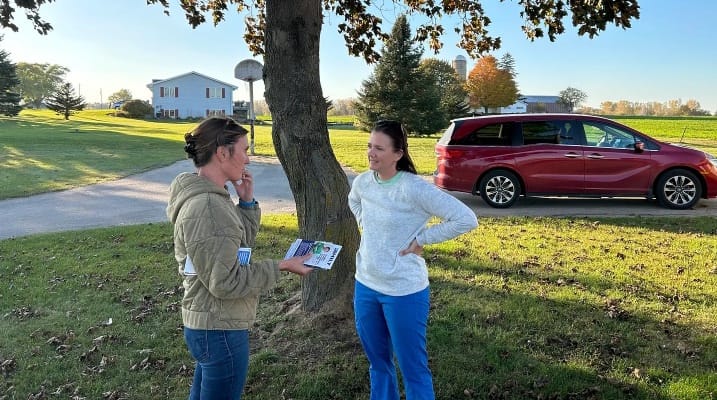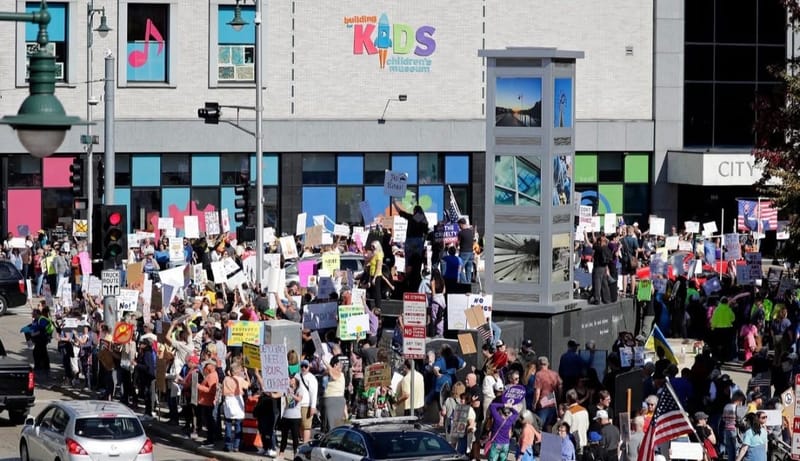Sisters worry about future for brother with Down syndrome
Paula and Janie wonder what happens if they die before Johnny. And with the Trump administration shedding so many government workers, how much harder is it going to be to get the needs of so many desperate people met?
Paula, Janie, Lucia and Francie were a tight-knit set of sisters growing up in the 50s and 60s.
It was a cohesion that would be tested when the last sibling and first boy was born in 1958. It wasn’t just the wrench that any newborn throws into a family dynamic, nor the fact it was a boy among four girls.
It was that Johnny was born with Down syndrome in an era when such a disability was viewed as a problem to be dealt with, even worked around, rather than a child to be loved and nurtured.
And so it was assumed that Johnny’s mother, Phyllis Stevenson, would tuck him away in an institution. But she said no. She said she would try to do it on her own and if she couldn’t handle it she’d make a decision then.
It was difficult that first year, the sisters recall, but once Phyllis found her footing she threw herself into activism. She joined the recently formed Association for Retarded Children (now called SOAR) and through them helped work to create several important institutions for people with disabilities
“She got herself involved with a wonderful group of people (at ARC) because she knew she needed help," Janie says. "And of course then there was nothing really available in 1958 for disabled kids. Mom came home one day and said they had a booth at Pierce Park and they’d be selling stuffed animals or something.”
That eventually led to neighborhood fundraisers where an envelope would go from house to house and people would donate what they could. The result was the New Hope Nursery to help parents raising children with disabilities.
As those kids grew older, though, they’d need a new place. That’s when Janie remembers the living room filled with bags full of money from another neighborhood fundraiser which contributed to the building of Plamann School. The school, which Johnny attended, was for K-12 kids with disabilities.
After Johnny graduated from Plamann School he got a job at Valley Packaging (formerly the Sheltered Activity Center) – another project aided by the fundraising work of ARC – where he would pack chalk into boxes for vending machines.
“They loved Johnny because he knew how to count,” Paula says. “He was a very good worker. And there was care there as well. It was a nice place for him to go and socialize and have a purpose.”
Phyllis was also involved with ARC when they helped to establish Agape Homes, community living centers for people with needs.
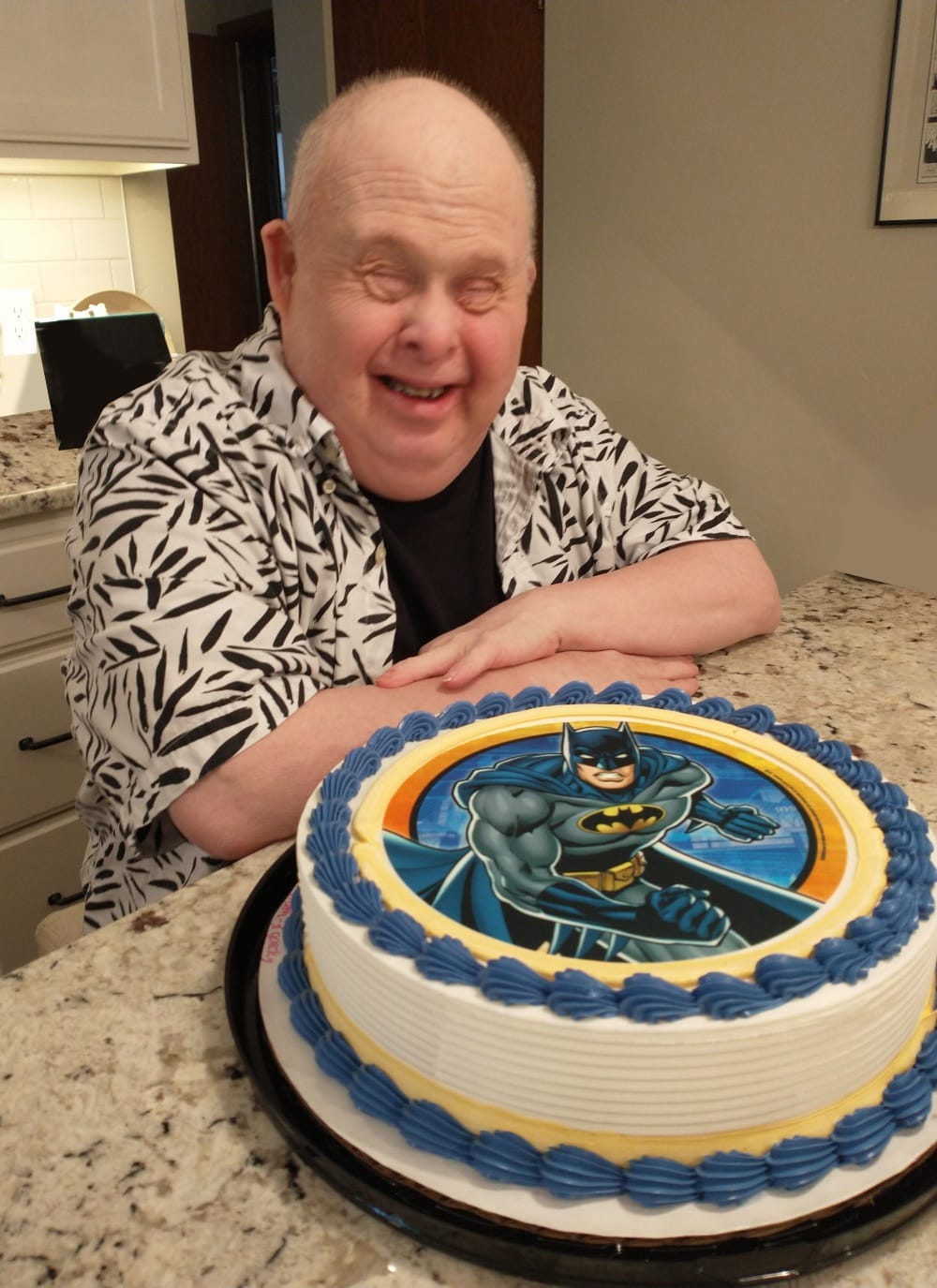
'He always got the joke'
Medicaid and Medicare didn’t come along until 1965, special education not until 10 years later. The Americans with Disabilities Act was enacted in 1990. Throughout the first seven years of Johnny’s life, the Stevensons received no government benefits for Johnny. The institutions for people like Johnny were just that – institutions. Back in those days, someone with Down syndrome was considered either ‘educable’ or not and was placed on a spectrum that used such terms as moron, imbecile and idiot.
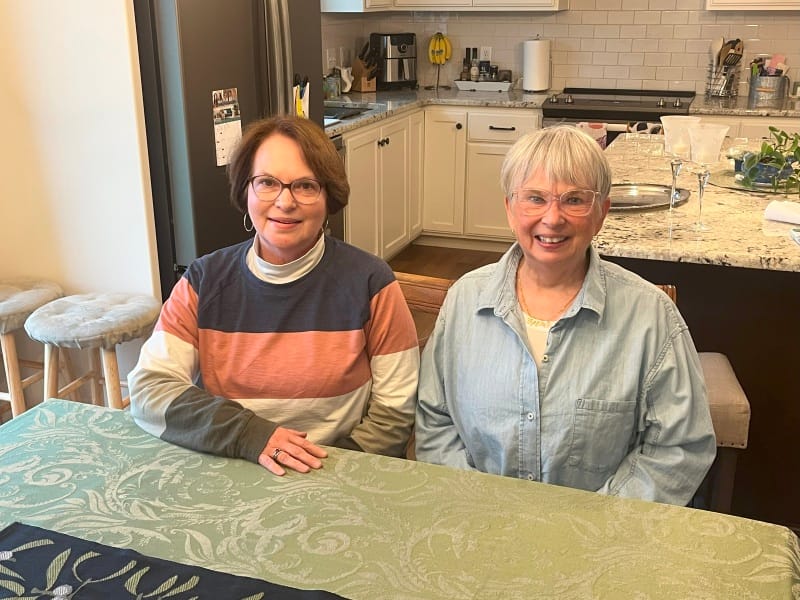
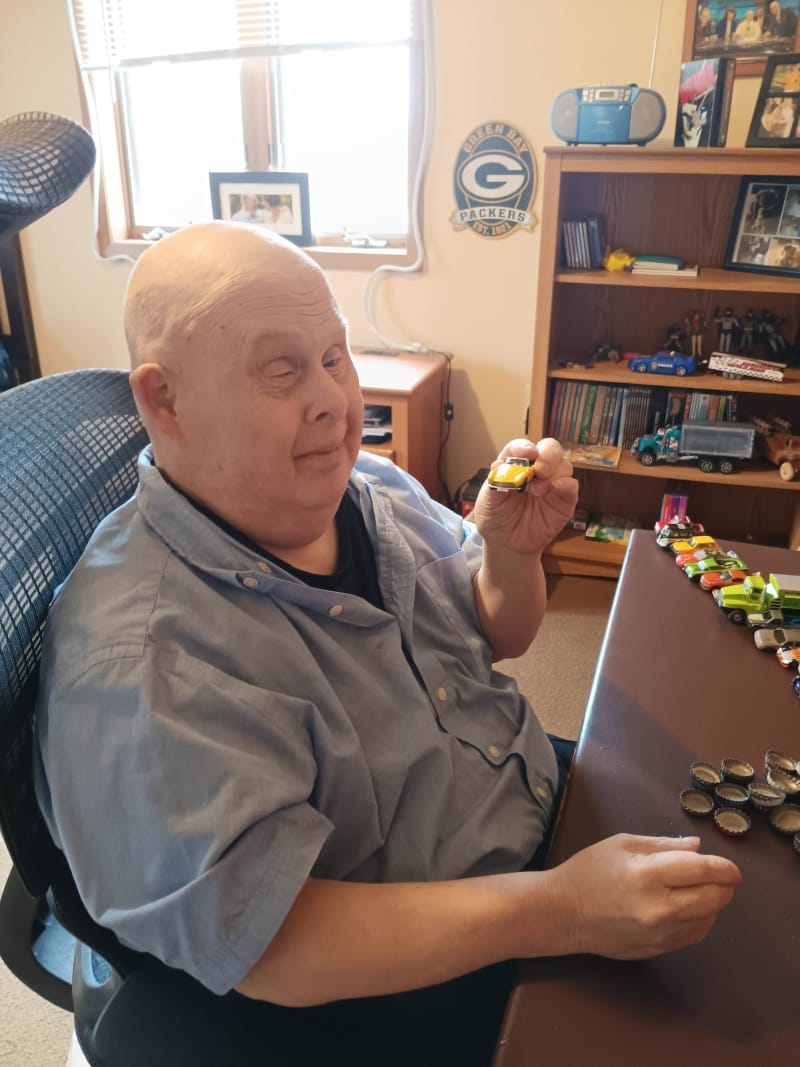
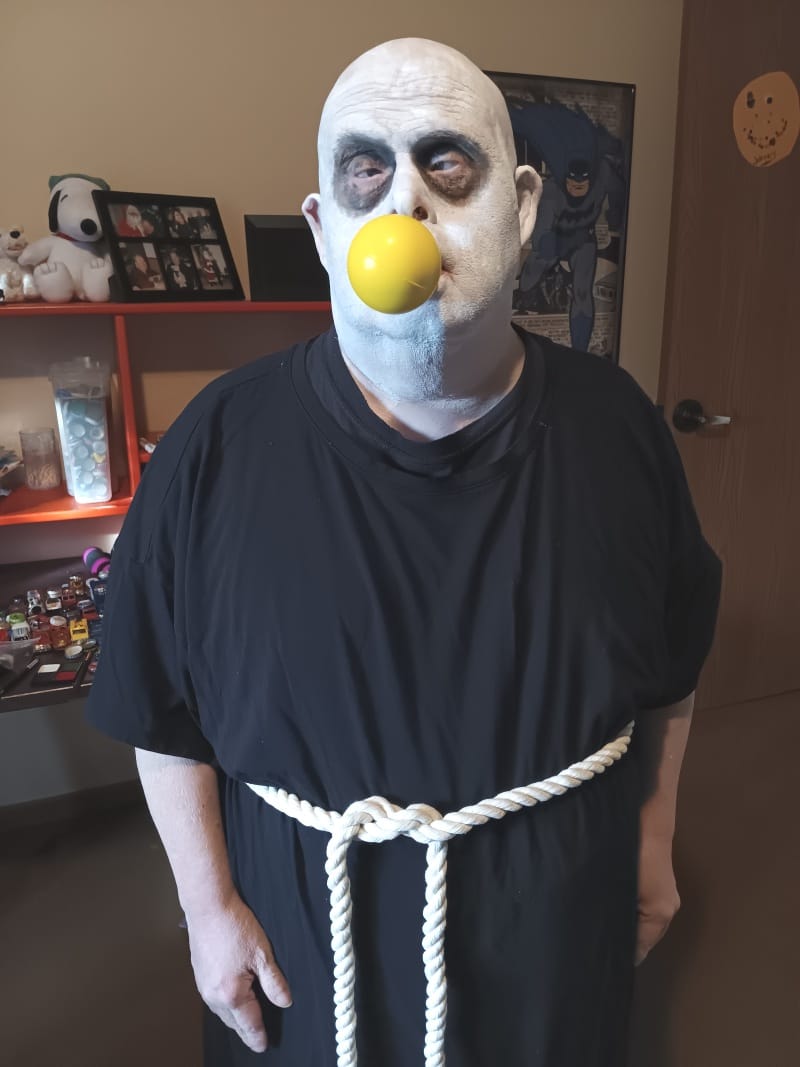
From left: Sisters and co-guardians, Paula and Janie; One of Johnny's favorite activities is playing with his "caps and cars;" Johnny as Uncle Fester at a Halloween Party.
Robert F. Kennedy, Jr.’s recent dismissive and offensive comments about people with autism calls back the views much of society held toward the disabled back in the 50s and 60s, that they were more of a burden and not worthy of human dignity or purpose.
The Stevenson sisters knew that their brother was deserving of his full humanity and made the sacrifices to help out their mom, whether it was Lucia cooking dinner at times, Paula making her own clothes or Janie babysitting.
Along the way, their father was severely injured in an accident at work and now Phyllis was minding a disabled child and husband – and four young daughters.
Janie and Paula remember a funny and aware younger brother in those days. One who was constantly on the move. Their father built sturdy gates to keep him safely in the living room for when, for instance, Phyllis was downstairs doing laundry. He also built fencing around the porch.
Still, Johnny could escape. One time a neighbor found him in her living room watching TV wearing only one of his father’s sweaters and with a colander on his head.
“The refrain in our house was always, ‘Johnny’s gone. Johnny’s not here? Where’s Johnny?’” Janie remembers, laughing. “Those were some of the funny things that happened to Johnny that didn’t seem that funny at the time.”

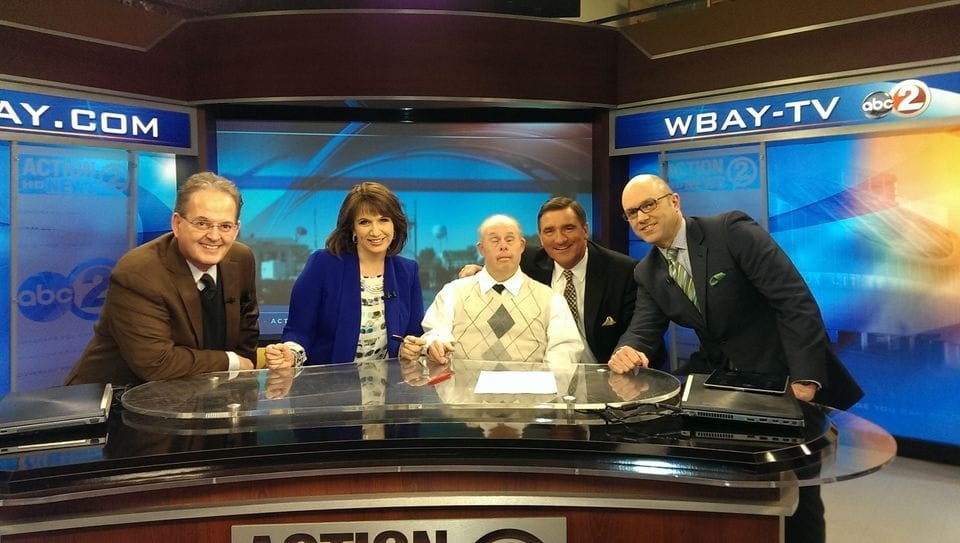
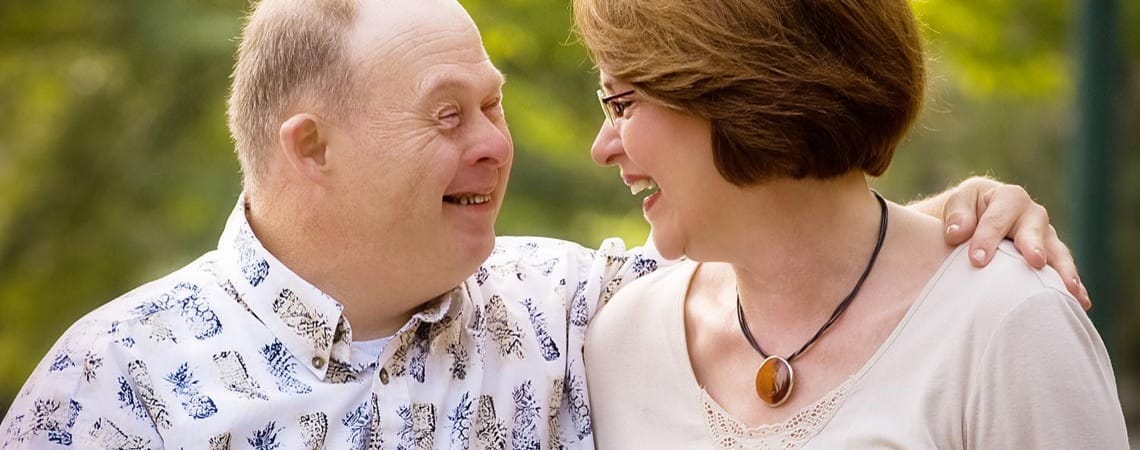
From left: Johnny playing minature golf; Johnny with Bill Jartz and the on-air crew at WBAY-TV; Johnny and Paula share a laugh.
Paula says she wishes they’d grown up in a time when video was prevalent, that there would be a lot of happy images to share.
“He was hilarious,” she says. “He loved to work a room and greet everyone. He was a social butterfly and loved a good knock-knock joke.”
They say the saving grace for restraining the nomadic Johnny was the tall record player in the living room.
“Johnny loves music,” Janie says. “All you’d need to do is put on a stack of long-playing records – Roger Miller or Johnny Cash or whoever – and he would sit there and rock and listen all afternoon.”
But while Johnny had his limitations, Paula remembers thinking someone who got jokes had to be pretty sharp. He retains a lot of information and can name all the main characters from the TV show MASH. They tell the story of Johnny laughing during a musical postlude at church recently.
“There was a guest organist, and she was playing the postlude, and it was a bright, cheery tune, but Johnny was chuckling through the whole piece, and Francie just was like, ‘why are you laughing?’” Paula recalls. “Francie was so intrigued
that after the service, she took Johnny up to the organist and said, ‘I just have to tell you, Johnny was chuckling through your whole piece.
“And the organist said, ‘Oh, he gets the joke!’ The musical piece, as it turns out,
was a scherzo, a form of music that is lively and playful, and often mimics the sound of laughter. We were just completely clueless, but not Johnny. He gets the joke, and there’s a level of intelligence there to get the joke.”
Johnny missed out on programs now under siege
Among the many things Johnny missed out on in his school years that are currently available but under threat by the Trump administration are special education and individual education plans – or IEPs – that provide focused guidance in school for a person with disabilities. Special education, which receives around 15 percent of its funding from the federal government, could suffer with the recent cuts to the Department of Education and Trump’s threats to shutter it entirely.
Even with that 15 percent federal contribution, public schools currently receive only about 29 percent of their necessary special education budget, meaning the districts must pick up the rest of the cost.
Special education for students with Down syndrome and other physical and learning disabilities has proven critical to physical, occupational and speech development, especially in their early years. Educating these students in an inclusive and mainstream environment alongside their peers is the most effective means for learning and socializing but individual education plans are critical in these settings. Johnny had access to none of that and now all those amenities that have benefitted persons with disabilities for the past 50 years are in question.
Furthermore, people with disabilities might be disadvantaged by the loosening of the Americans with Disabilities Act that Trump mandated early on when he withdrew 11 regulations to reduce burdens on businesses seeking to comply with the ADA.
Janie is also perplexed by the gutting of AmeriCorps last month by DOGE, the so-called Department of Government Efficiency. AmeriCorps was created to foster civic engagement in tangible ways, especially through volunteerism. It hits close to home for the Stevensons because their mother, Phyllis, was a devoted volunteer well before AmeriCorps came into existence in 1993. She wonders what happens to all the organizations dependent on AmeriCorps for volunteers.
“I was recruited as a volunteer through the Retired Senior Volunteer Program that was under the auspices of AmeriCorps and AmeriCorps funding has been slashed by millions,” Janie says. “RSVP is one of the main recruiters of senior volunteers who work all over, helping kids with reading, teaching exercise classes, delivering Meals on Wheels and so many things that RSVP touched and got volunteers for. How much money are we saving? AmeriCorps and RSVP and Volunteer Fox Cities all help the community save money.
“And if those supporting agencies are gone, they're going to have to figure out something. What are they going to do when they need volunteer drivers who pick people up and take them grocery shopping and to doctors offices and to Madison or Milwaukee for their chemotherapy? They take them all over.”
Since so many were let go at AmeriCorps last month and so many grants were abruptly cancelled, organizations have been scrambling to find alternative solutions.
While Phyllis Stevenson and ARC did outstanding work to raise money for New Hope Nursery, Plamann School, Valley Packaging and Agape Home, AmeriCorps helped to streamline such civic engagement and volunteerism, making for significantly more effective and efficient outcomes.
'We don't know what we can plan '
Johnny lived with Phyllis until his mid-forties. In 2004 Phyllis was diagnosed with cancer. He was fortunate enough to get an emergency respite placement at a group home around that time. Phyllis died in 2009 and Lucia became Johnny's legal guardian.
Johnny, who is now 66, has been living at an Anew Choice Senior Care group home for the past decade. Janie and Paula, who took over Johnny’s guardianship when
Lucia had health issues, are responsible for making sure all of their brother’s
guardianship and Medicaid paperwork and reports are in order.
Janie laughs at the notion that Medicaid is beset by fraud and waste, as is suggested by the Trump Administration’s apparent plans to cut nearly $1 trillion dollars from the program that helps the disabled and low-income families and children. Medicaid is what helps pay for Johnny’s group home accommodations. Jane says that, while some people might try to scam the system, her personal experiences have led her to conclude that it’s far from easy. She has to annually provide proof that Johnny is still disabled and doesn’t have income beyond the eligibility threshold despite the fact that she keeps reminding them he will never get better, only worse, and that his only income is from Social Security.
“We almost lost his Medicaid once because they were questioning $580 he had in his casket savings account because we had opted for cremation when he died,” Janie says. “And they were thinking maybe we were going to sell the casket if we were cremating Johnny. But that money belonged to the funeral home. It wasn’t Johnny’s.”
The bottom line is, after filing reams of paperwork and after numerous calls to the Medicaid office, they ran right up against the deadline for refiling because of the hoops they had to jump through and there was never any lapse in coverage.
Paula and Janie wonder what happens if they die before Johnny and something like this comes up again? And with the Trump administration shedding so many government workers, how much harder is it going to be to get the needs of so many desperate people met? Despite the occasional snafu like the one over the casket savings account, Janie says the people she works with at the Medicaid office are a godsend, not nameless and faceless bureaucrats as they have been depicted by the Department of Government Efficiency.
And though Paula doubts that Medicaid cuts would leave her brother homeless, she worries that, with all the Trump administration’s executive orders and the GOP budget bill, all of which render the social safety net ever more tenuous, his life might be upended in so many debilitating ways. She points out that if periphery services start getting cut around him, he might lose his caregiver, Rachel, who is an essential emotional support for him.
“I just worry it will affect the care-giving organizations around him,” Paula says. “There might be collateral damage. They said he’d never live past 30 and now here he is and we have his guardianship but what if he outlives us all? I mean, can we trust the system to still be there?”
Janie wonders, too, what else their brother might lose if the threatened cuts go through.
“Will the home he lives in be able to be sustained?” she asks. “And will these nursing homes be able to stay open if they don’t have the workers?”
Paula says she worries because with all the planning that has gone into making Johnny’s life purposeful and secure, everything seems tenuous right now.
“With the current administration, it's all getting thrown up into the air,” she says “And we don't know what we can now plan on as we age and as Johnny ages. What plan can we put in place that we can depend on if we're no longer here for him?”

Sisters worry about future for brother with Down syndrome © 2025 by Kelly Fenton is licensed under CC BY-NC-ND 4.0


